Lactifluus piperatus, also known as the peppery milkcap, is a medium to large-sized white mushroom with a hidden spiciness. It earns the name peppery milkcap! This rather plain-looking white mushroom is edible, with caution, and is an interesting substitute for pepper in culinary dishes. Peppery milkcap mushrooms also are a prime host for another fabulous and well-known star edible species, the Lobster mushroom.
Other common names for this spicy mushroom are peppery Lactarius, peppery milk mushroom, pepper milkcap, and white peppery milk cap. In Germany, it is known as Pfeffermilchling, which translates to “pepper milk cap.”
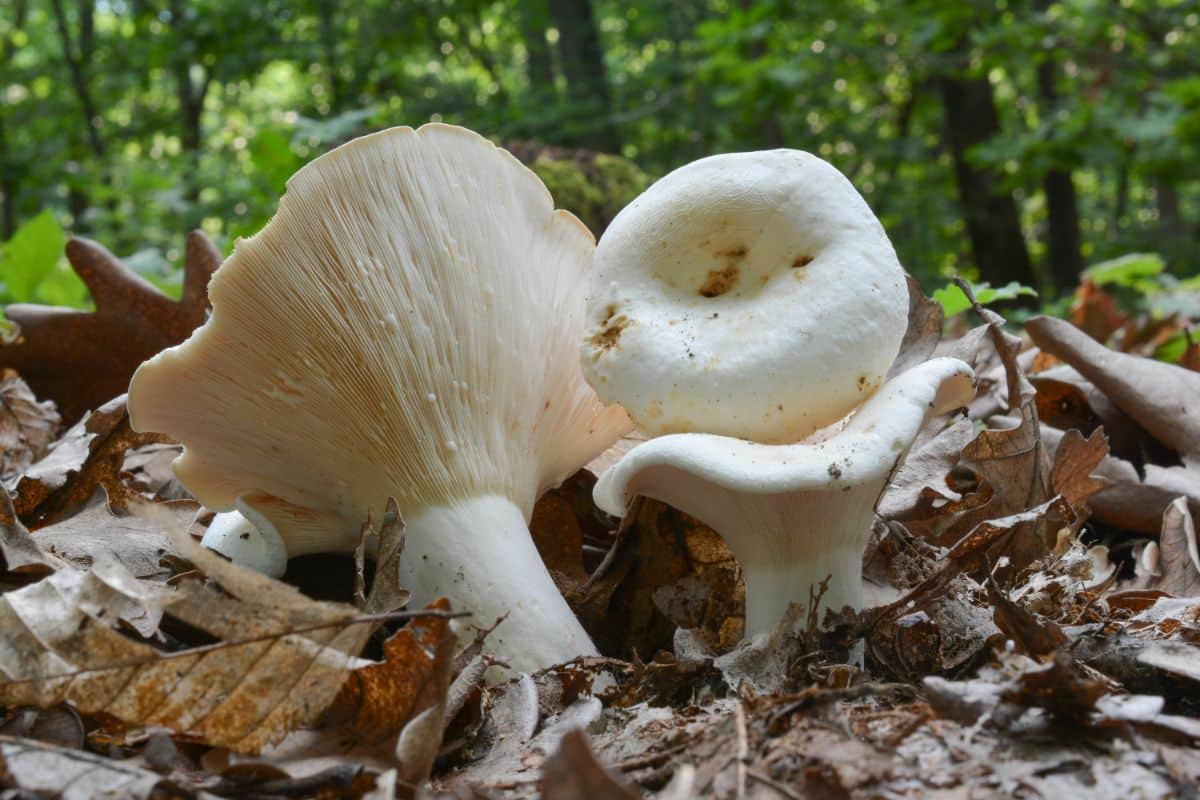
Jump to:
All About Peppery Milkcap Mushrooms
The peppery milkcap has been known and consumed by humans for centuries. Historical records suggest that ancient Romans and Greeks were familiar with this mushroom and used it as a culinary ingredient. In fact, the famous Roman philosopher and naturalist Pliny the Elder described the Peppery Milkcap in his encyclopedic work, Naturalis Historia, around the first century AD. In ancient Rome, the peppery milkcap was known as “fungus piperatus” and was used as a seasoning for various dishes. It was also believed to have medicinal properties, particularly for digestive ailments.
In more recent times, lactifluus piperatus has been a popular wild mushroom among foragers and mushroom enthusiasts, prized for its unique flavor and versatility in the kitchen. Its distinctive peppery taste is perfect as a seasoning when the fungus is dried and ground up.
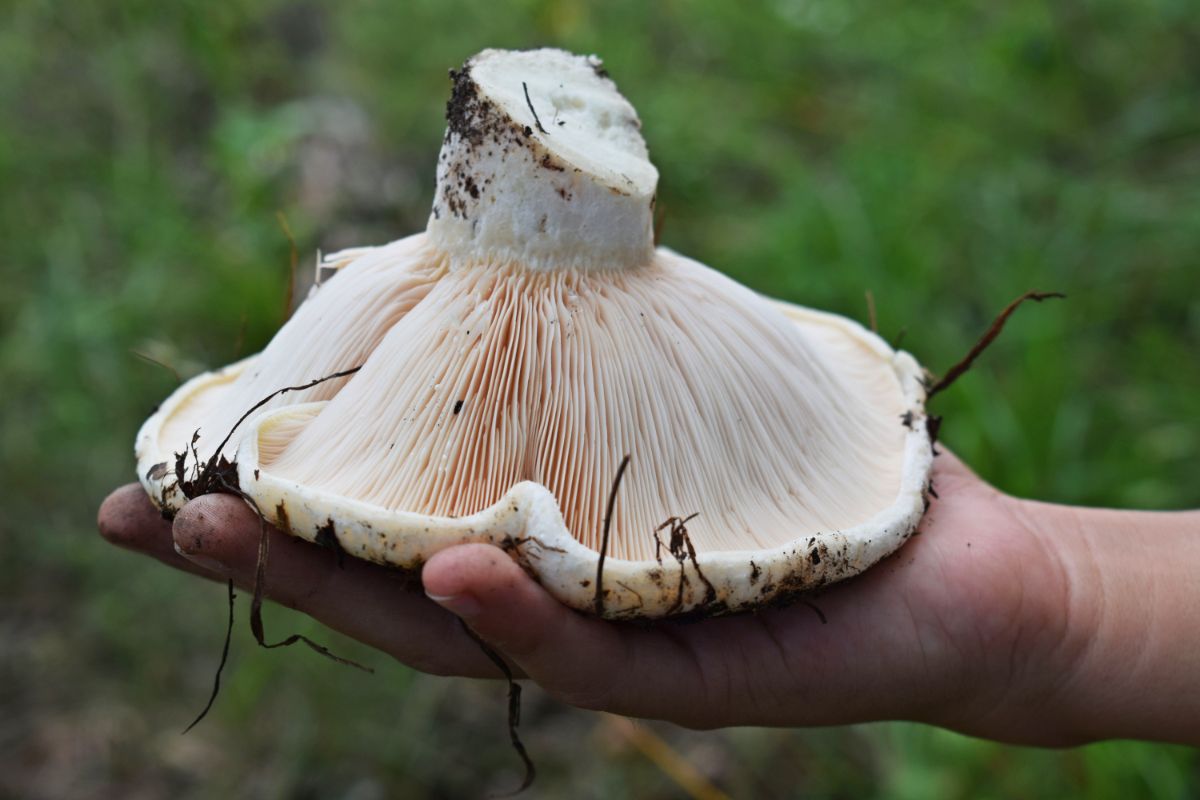
Peppery milkcaps are part of the milkcap family, mushrooms that bleed a milky latex-like substance when cut. Some of these species bleed profusely, while others only do so lightly. The peppery milkcap generally bleeds quite a bit of white latex – you have to be careful handling this species because getting some on your hands and then touching your eyes is not a pleasant experience at all. Especially be aware of kids touching this species. It’s not toxic or dangerous, but similar to touching a cut hot pepper.
This mushroom used to be known as Lactarius piperatus and is still commonly found under this name in identification and foraging guides. Most other milkcaps belong to the Lactarius genus, but recently the peppery milkcap got moved. In addition, recent studies show that each population across the world and continents is unique with no overlapping. This may mean that the North American species is actually its own distinct specie or species.
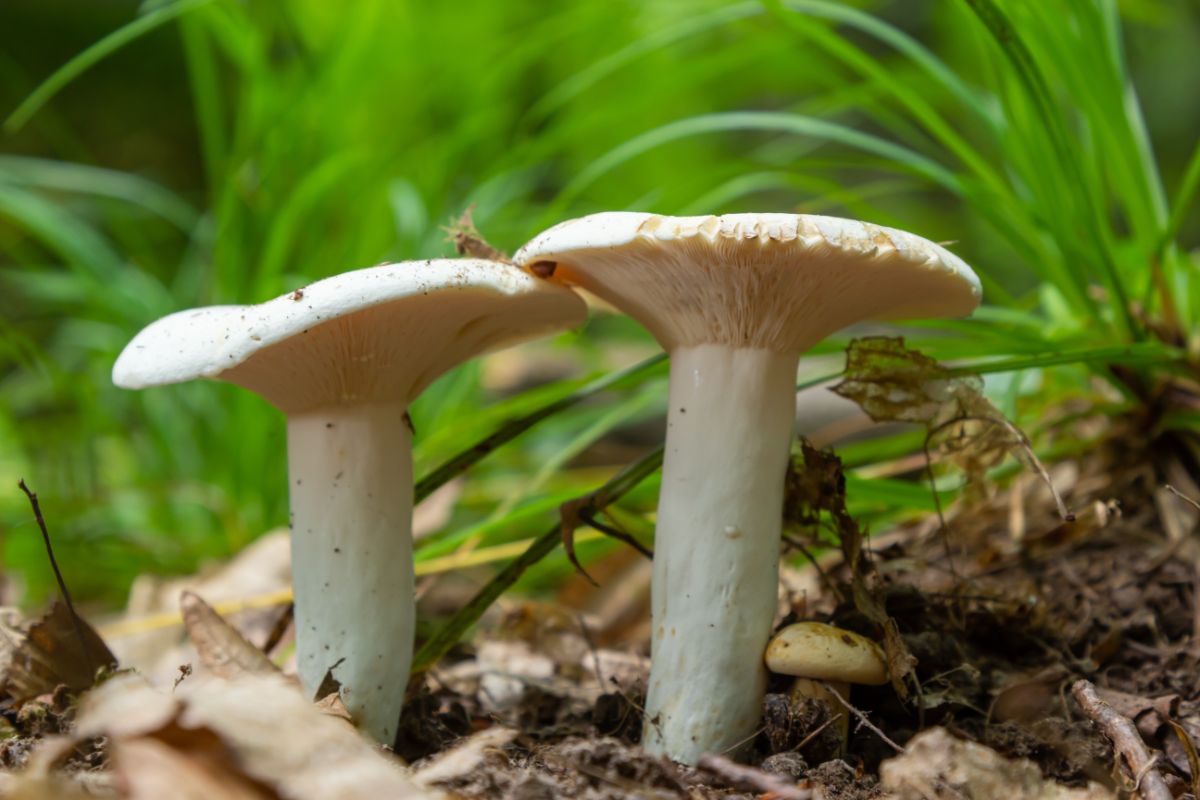
Identifying Lactifluus Piperatus
Season
Late summer and fall.
Habitat
The peppery milkcap is a widely distributed mushroom found throughout Europe, Asia, and North America. It appears on the east coast of North America, primarily east of the Rocky Mountains.
It grows in both deciduous and coniferous forests, in association with trees like birch, beech, oak, spruce, and pine. It is most often found in oak-dominated forests but is by no means limited to them. Peppery milkcaps are mycorrhizal fungi, meaning that they form a symbiotic relationship with the roots of their host trees, exchanging nutrients and helping the tree to grow.
The mushrooms grow on the ground, never from wood or on trees. They appear singularly or, more often, in scattered groups on the forest floor.
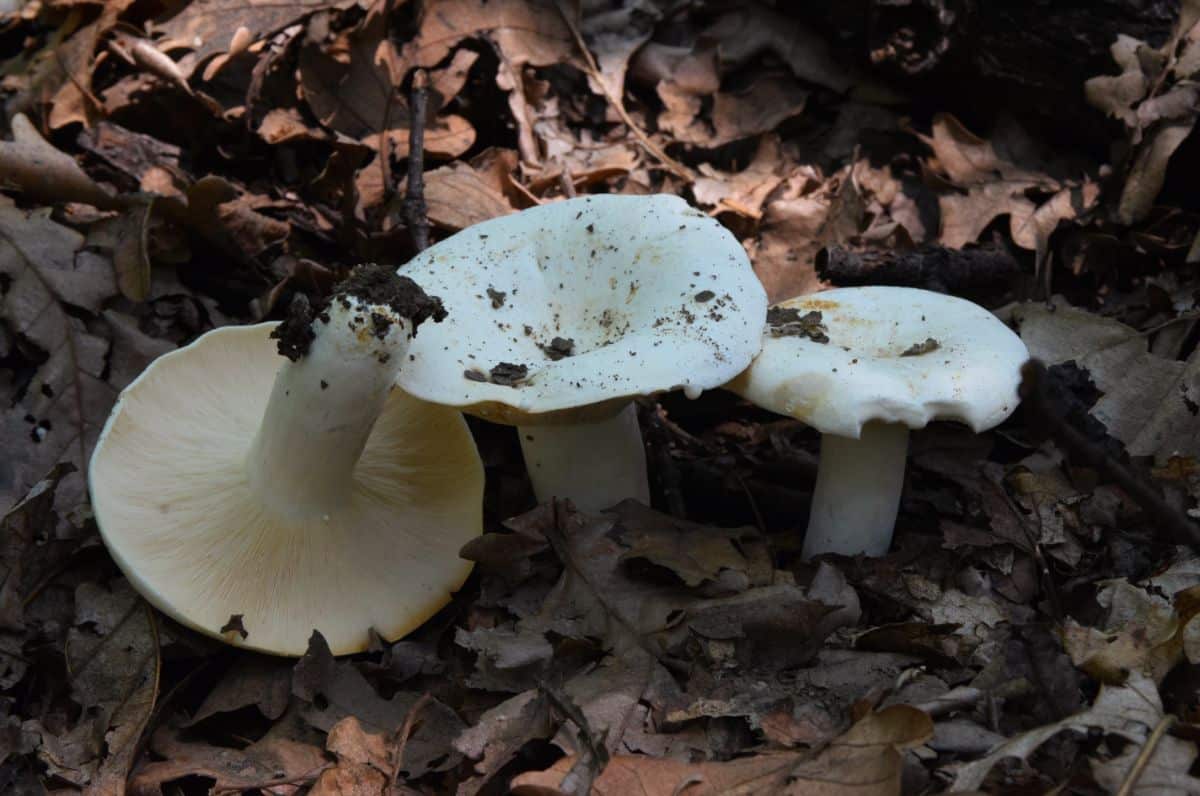
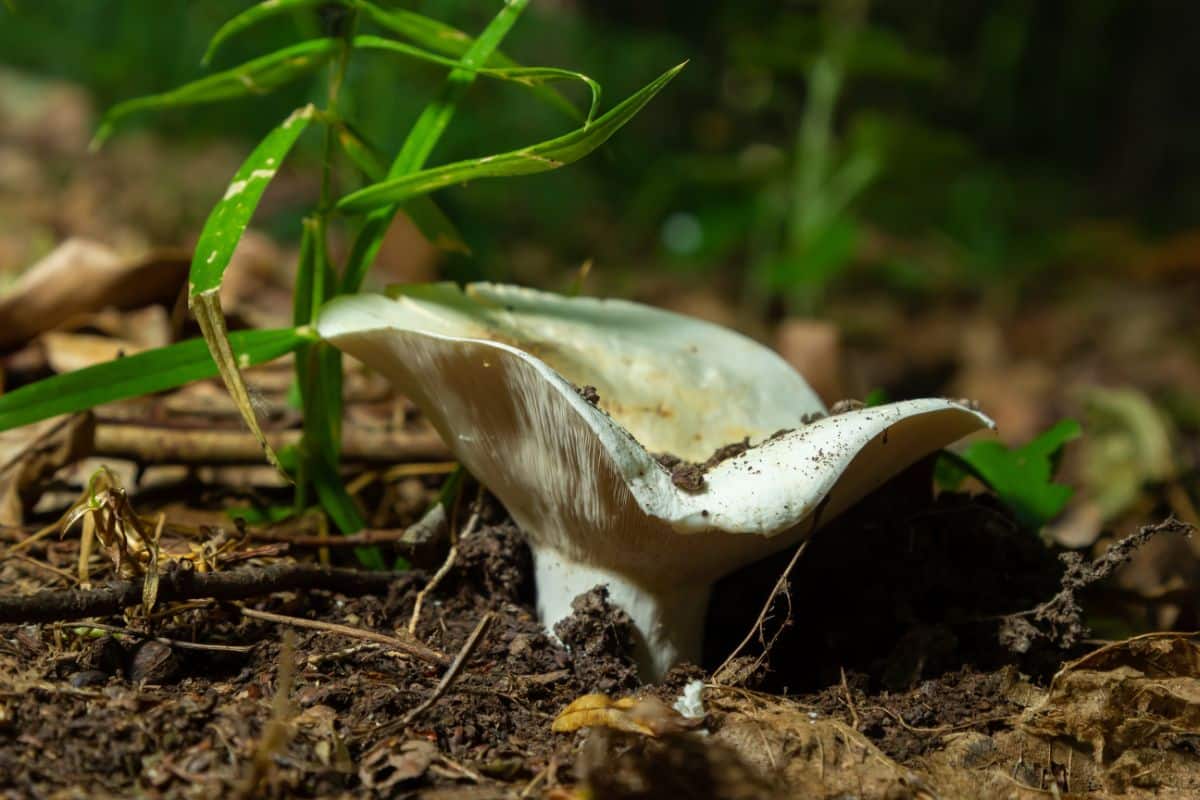
Identification
Cap
The cap is convex to flat and ranges from 2- 6 inches in diameter. The cap is typically white to cream in color, occasionally with a pale pink tinge, and often displays faint concentric rings. The cap margin is usually inrolled when young, becoming more wavy or irregular as the mushroom matures, until it is mostly upturned. There is almost always a pronounced central depression or “navel,” which, when combined with the upturned edges in maturity, gives it the appearance of a funnel.
This is a stout, noticeable mushroom. The cap is dense, thick, and gets quite large.
Gills
The gills of the peppery milkcap are closely spaced, white to cream in color, and can be either adnate (attached to the stem) or slightly decurrent (running down the stem). The gills are so closely packed, it looks like there is no space for any more.
One of the most distinctive features of the peppery milkcap is its latex or “milk,” which is a white, acrid-tasting liquid that is exuded when the gills or other parts of the mushroom are damaged. It is most noticeable when you slice the gills. The milky latex does not change color when exposed to air, remaining a solid white.
Stem
The stem of the peppery milkcap is white to cream in color and can range from 1.5 – 4 inches in length. It is typically cylindrical, sometimes with a slight taper towards the base, and is often marked with fine, longitudinal ridges. It is smooth without adornments or markings. The stem is very thick and dense – it is not hollow. It breaks easily but isn’t brittle.
Spore Print
The spore print of this mushroom is white to cream.
Smell and Taste
This mushroom doesn’t have a strong or noticeable smell. The taste is acrid to quite hot and varies between specimens. You can take a tiny bit and put it on your tongue to verify it is the peppery milkcap, but we recommend this only as the last point of identification and only a very tiny amount. You’ll know!
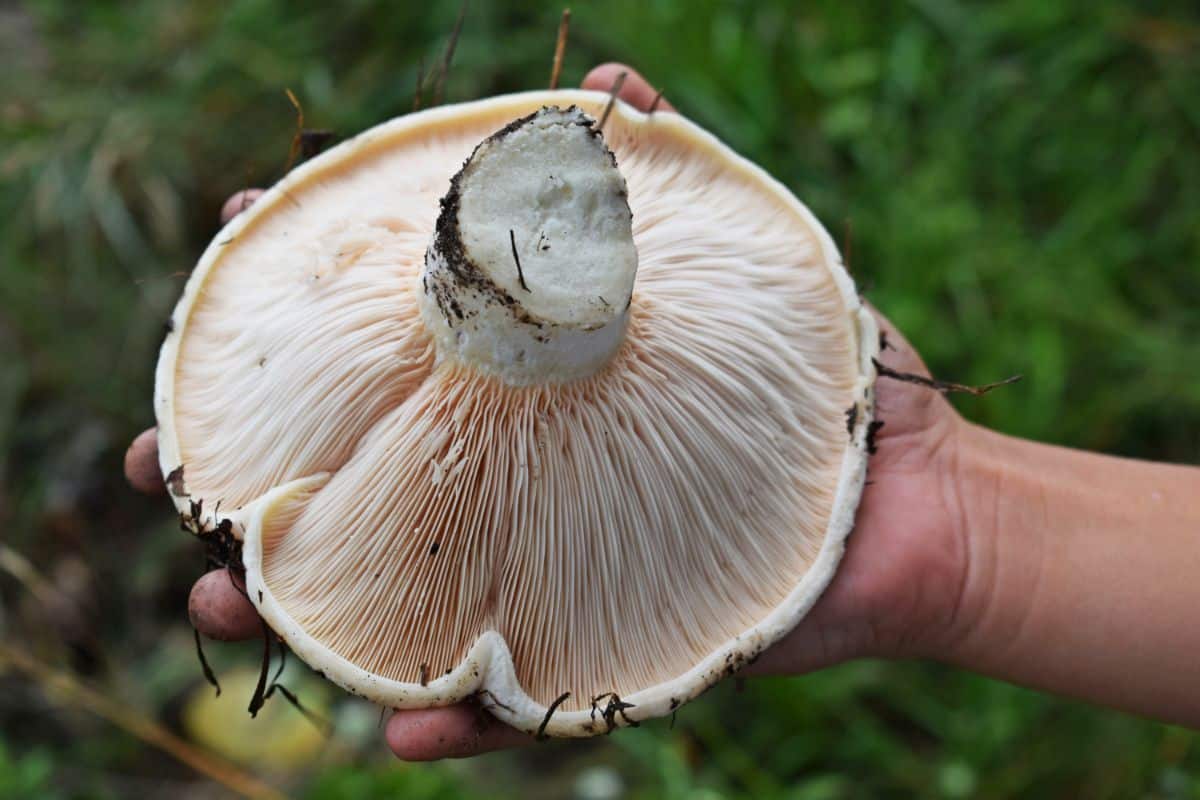
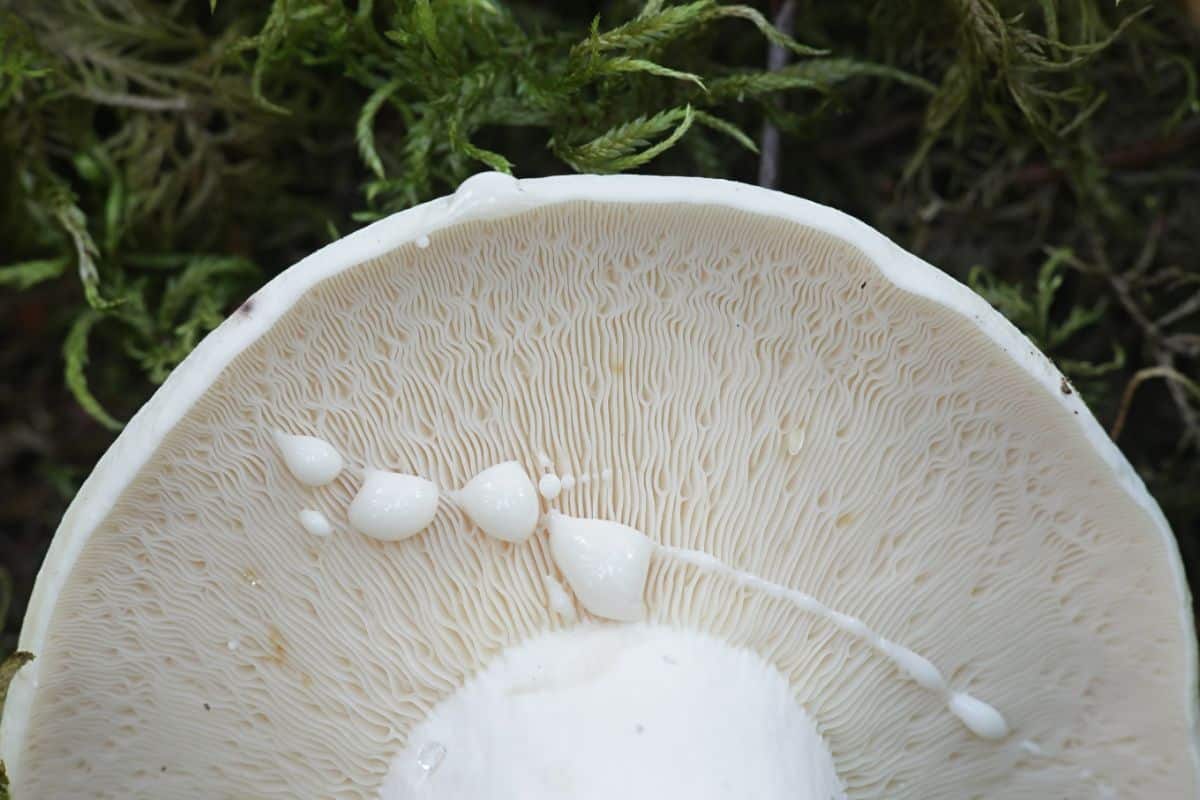
Peppery Milkcap Lookalikes
Lactarius glaucescens is also a white milky cap mushroom species that grows in oak-dominated forests in summer and fall. The primary difference between these two lookalikes is that L. glaucescens milky latex slowly turns olive or light green, while the peppery milkcap’s milk does not change color at all. Sometimes, it takes hours for the color change to happen. Other than that slight difference, these two species are genuinely twinsies to the naked eye. This species is also edible and peppery
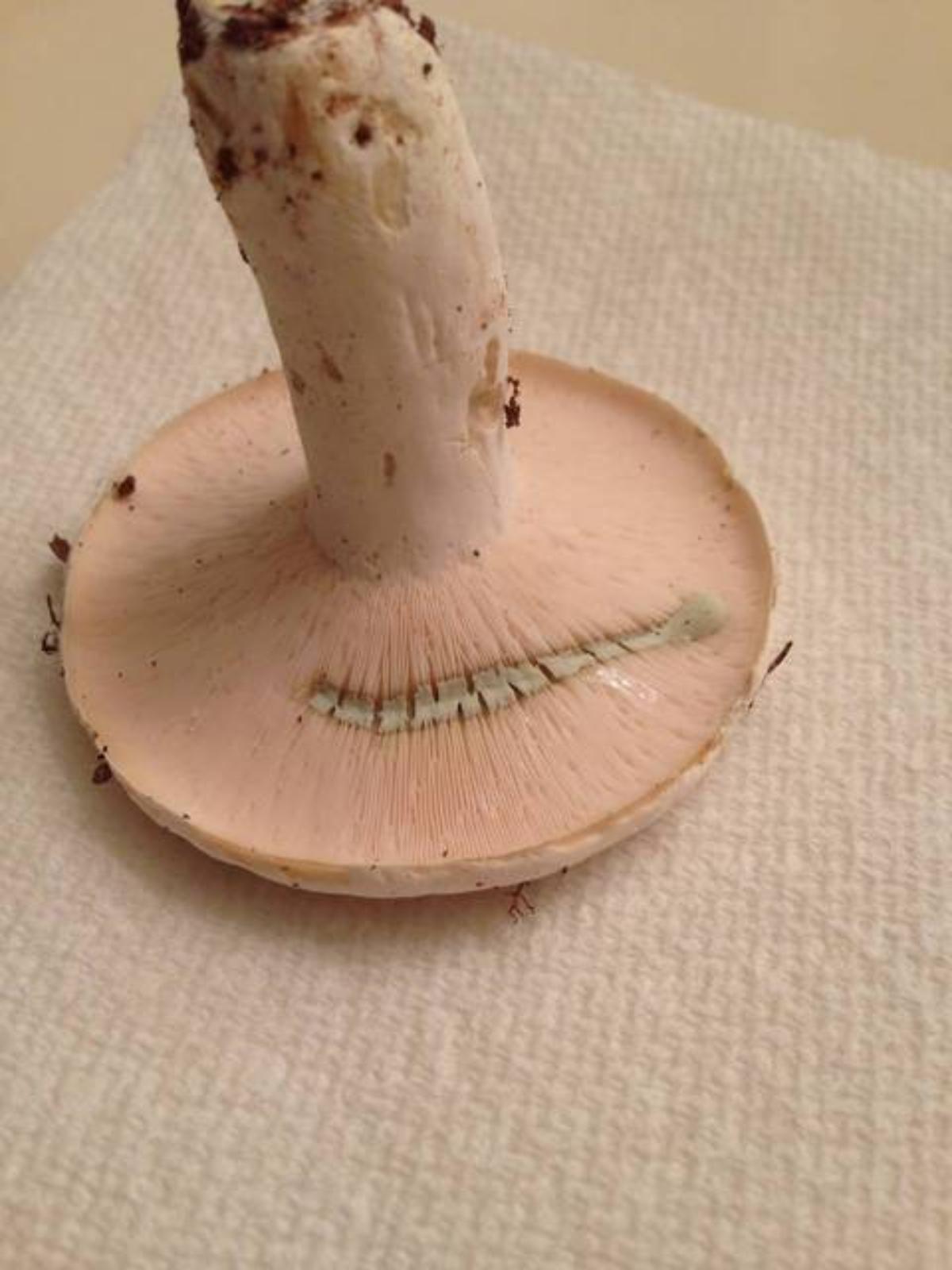
Lactarius subvellereus var. subdistans is another all-white milky cap that looks a lot like the peppery milkcap. However, the cap and stem on this species are finely velvety, and the milk slowly changes to yellow. Additionally, the gills of this species aren’t nearly as crowded as the peppery milky cap.
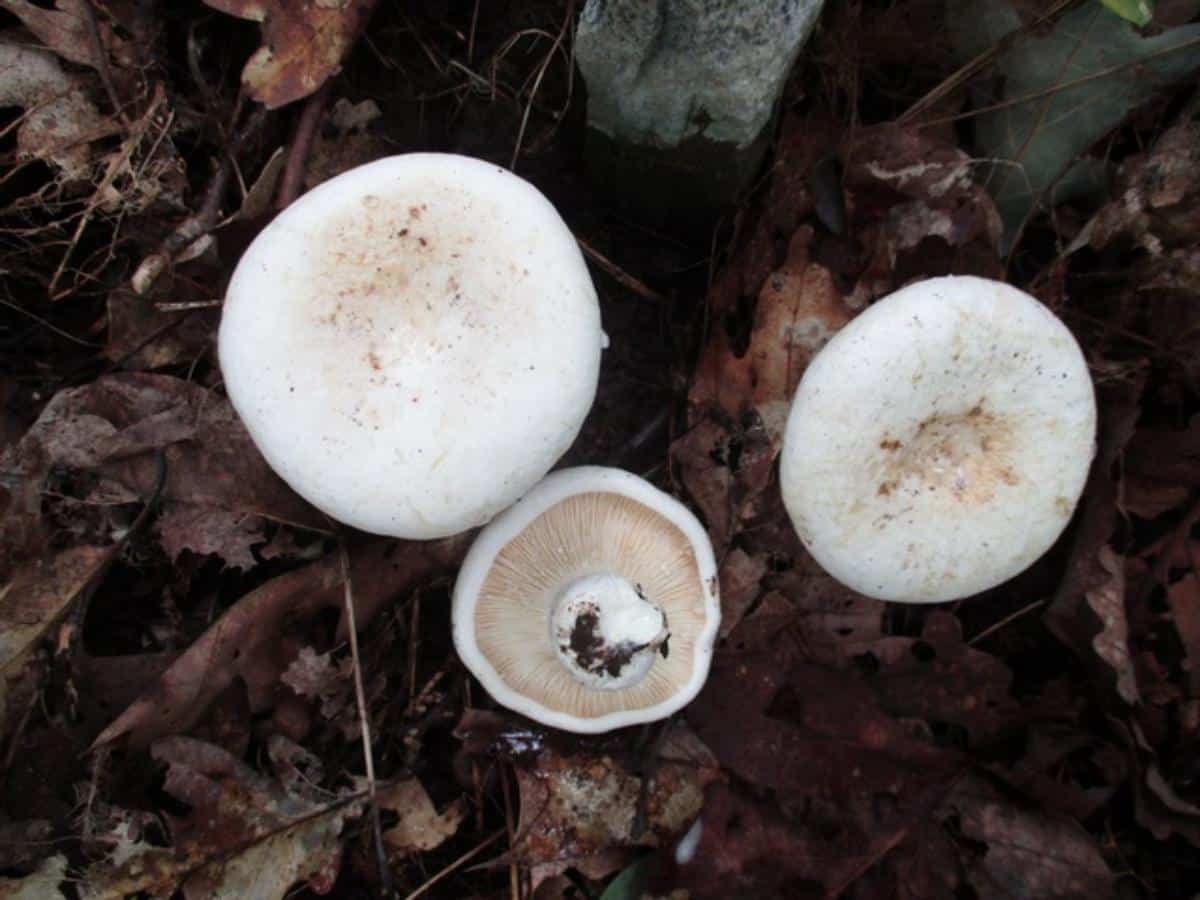
Deceiving Milkcap (Lactifluus deceptivus)
The deceiver is another all-white spicy-tasting milk cap species that is often confused with the peppery milk cap. There are a few differences, though, between the two. The deceiving milkcap has soft, cotton-like fibers around the cap edge, and its gills are more widely spaced. Older specimens develop yellowish-brown scales, which is a stark contrast to the all-white of the peppery milkcap. This species is also spicier than the peppery cap, not that you want to do that taste test!
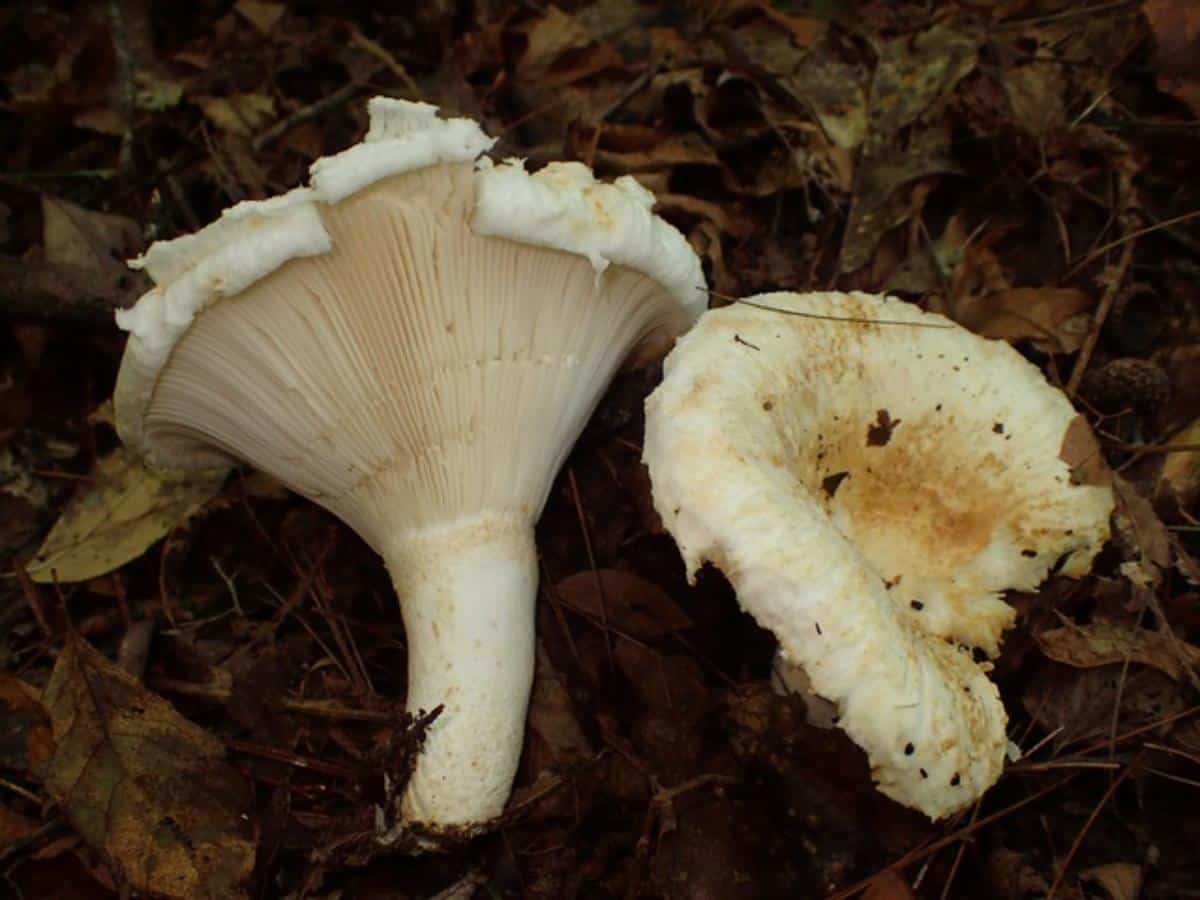
Woolly Milkcap, aka Bearded Milkcap (Lactarius torminosus)
This mushroom is characterized by a woolly, hairy cap margin. Many consider it toxic because the peppery flavor is extreme, to the point of burning one’s tongue. However, like the peppery milkcap, this mushroom is safe for eating after being parboiled and pickled.
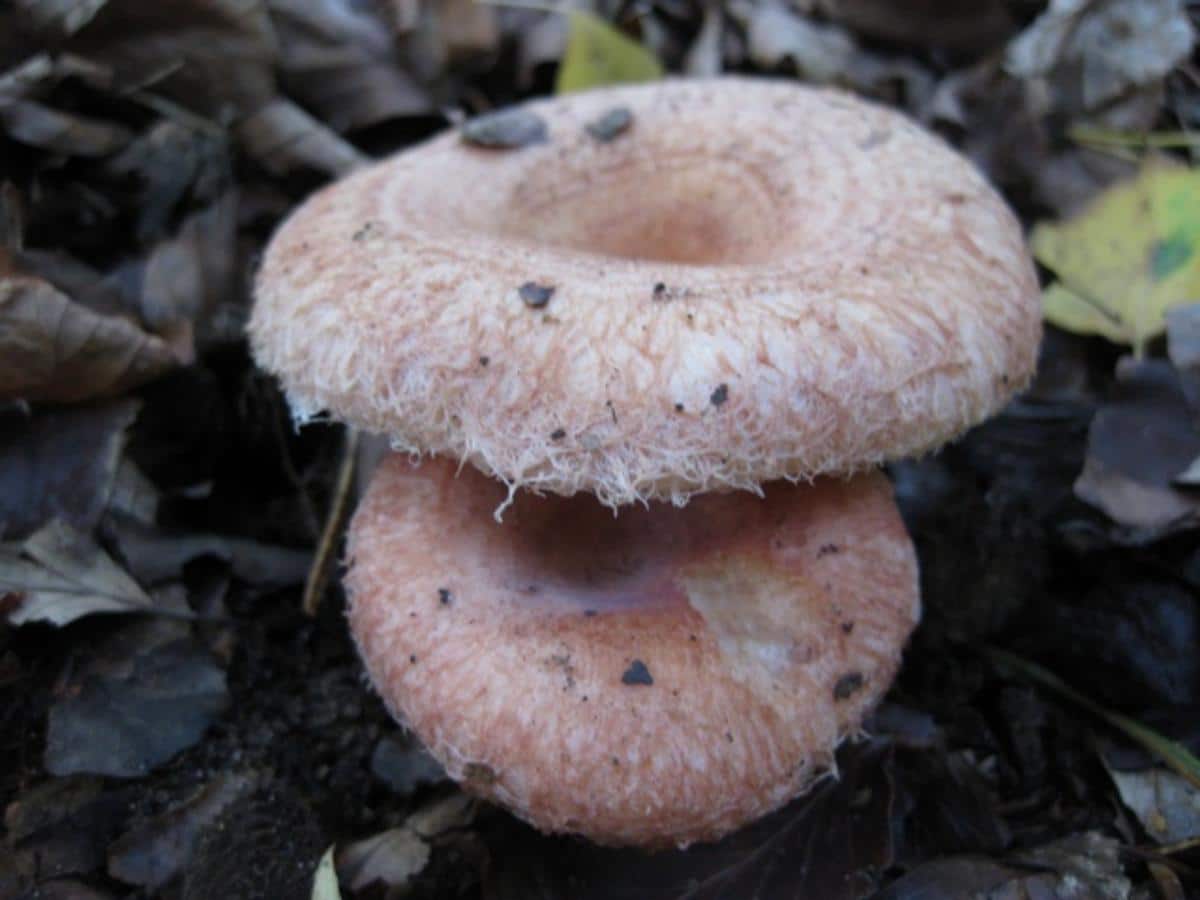
Short-stemmed Russula (Russula brevipes)
In almost all aspects, this cousin of the peppery milkcap looks identical. However, there is a crucial difference – this mushroom does not bleed a milky latex when cut. Also, it isn’t spicy.
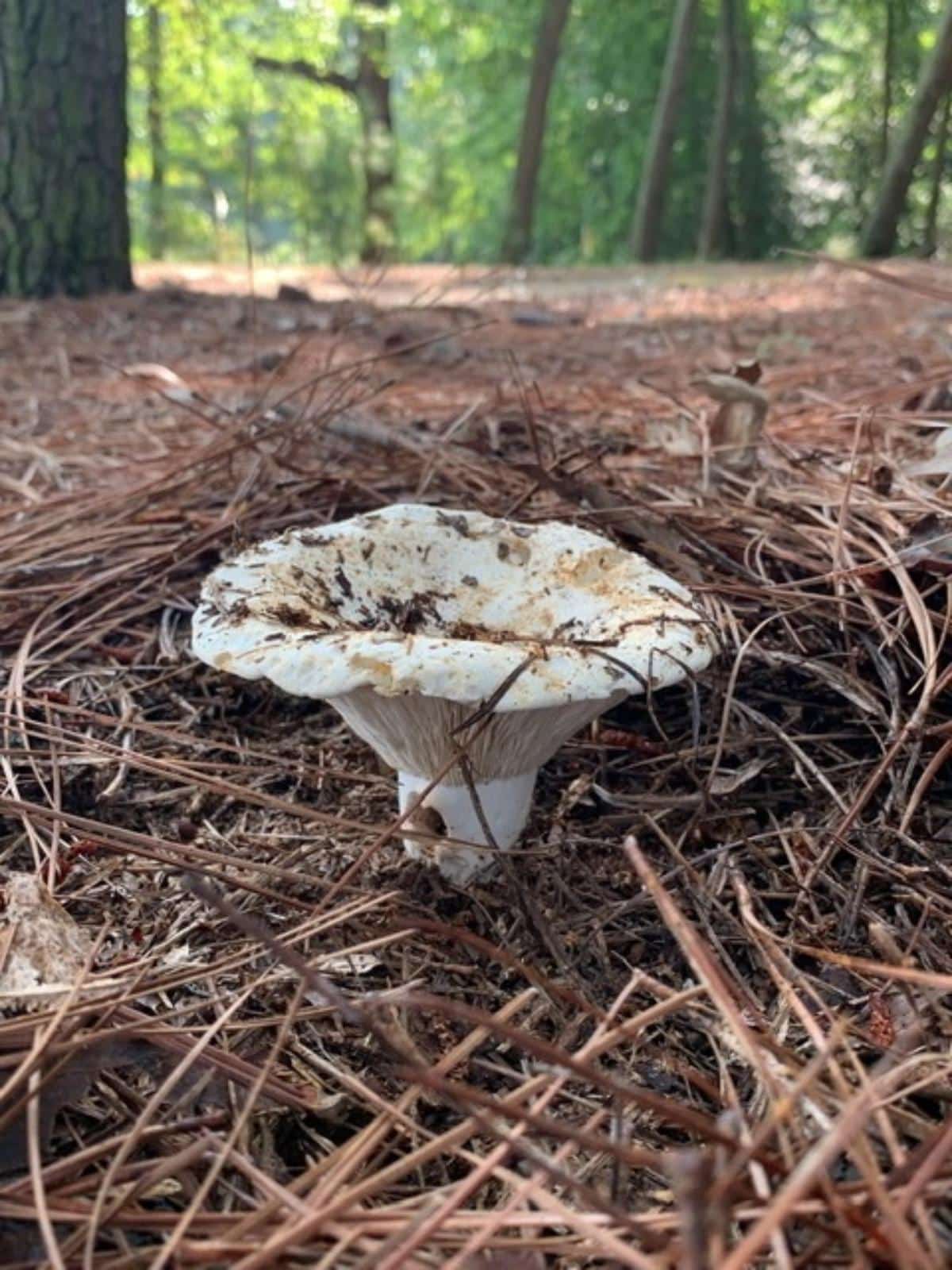
Lactifluus Piperatus Relationship with Hypomyces Lactifluorum
Lactifluus piperatus shares a unique relationship with another fungus, Hypomyces lactifluorum, commonly known as the Lobster Mushroom. Hypomyces lactifluorum is a parasitic fungus that colonizes and transforms various mushroom species, including Lactifluus piperatus, into a bright orange, lobster-like appearance.
The resulting Lobster Mushroom is considered a culinary delicacy, with a firm texture and a unique, seafood-like flavor. This fascinating relationship between Lactifluus piperatus and Hypomyces lactifluorum is just another example of the complex and intriguing world of fungi.
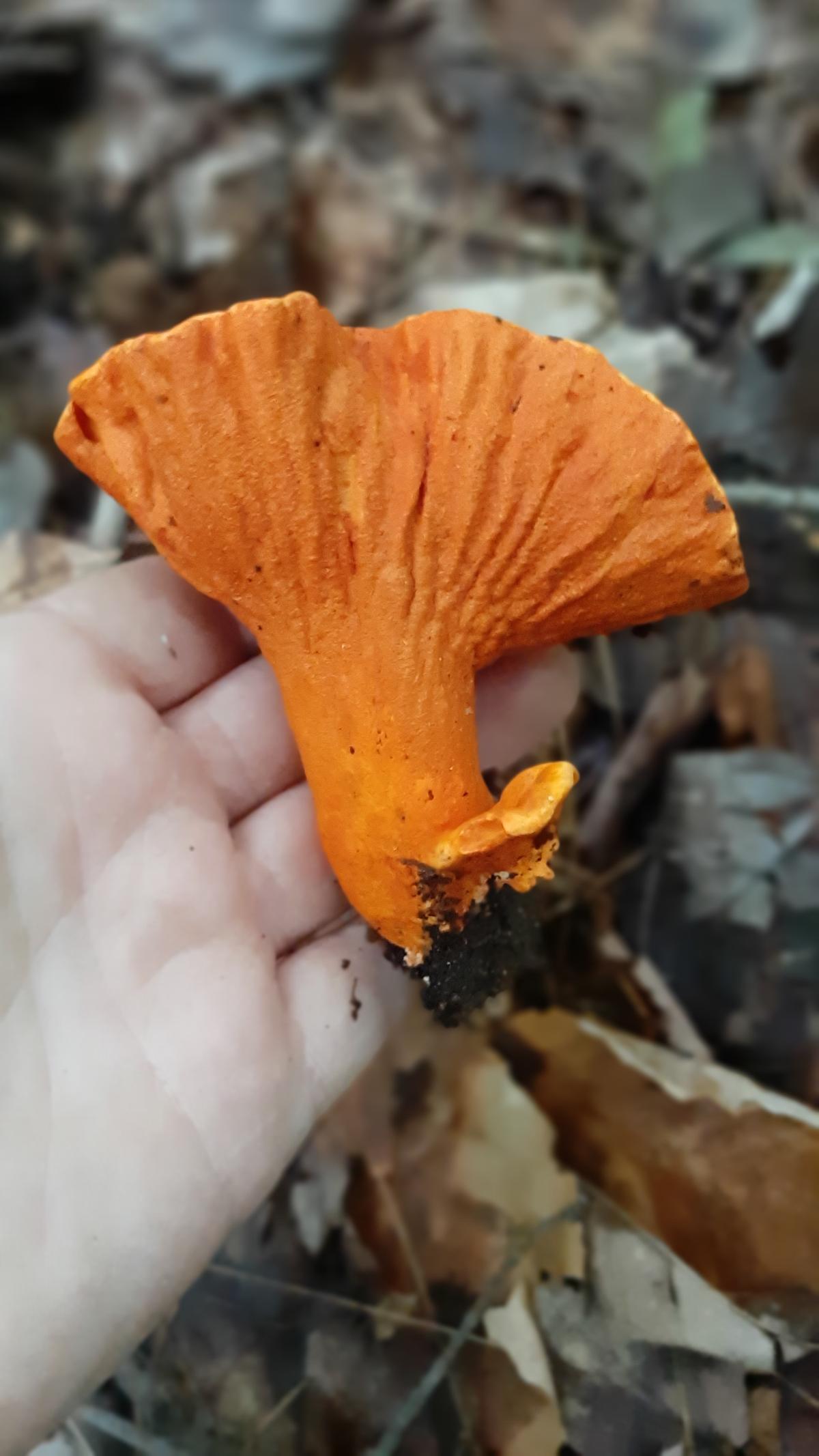
Cooking With The Peppery Milkcap
The peppery milkcap has a wide range of culinary uses thanks to its firm texture and peppery flavor. The latex’s acrid taste can be mostly removed by parboiling the mushrooms before cooking, making them suitable for a variety of dishes. Even after parboiling, there is some spiciness left, just not to the extent as when it was raw.
There is some debate around whether parboiling is worth it as the end result isn’t a fabulous-tasting mushroom. But it does work and makes the mushroom edible as a regular mushroom, so it’s a good species to know about (in a case of a zombie apocalypse!). More often, the mushrooms are simply dried and powdered and used very lightly as a seasoning.
- In Salads and Appetizers: Once the latex’s acrid taste is removed, thinly sliced peppery milkcap can be pan-fried or deep-fried and added to salads, providing a crunchy texture and a peppery kick. They can also be pickled or marinated and served as appetizers or tapas-style dishes.
- In Soups and Stews: The firm texture of the peppery milkcap holds up well to long cooking times. They can be added to cream-based soups, like mushroom or potato soup, or used in hearty vegetable stews.
- As a Meat Substitute: The peppery milkcap is a decent meat substitute, especially when chopped and sautéed with onions and garlic. Its firm texture and peppery flavor makes it an ideal replacement for ground meat in dishes like pasta sauce, chili, or shepherd’s pie.
To enjoy the peppery milkcap year-round, you can preserve and store them in several ways:
- Drying: Simply slice the mushrooms and place them on a drying rack or in a food dehydrator until they are completely dry and brittle. Store the dried mushrooms in an airtight container in a cool, dry place, and rehydrate them in hot water or broth before use.
- Freezing: Blanch the mushrooms in boiling water for 1-2 minutes, then plunge them into cold water to stop the cooking process. Pat them dry and freeze them in a single layer on a baking sheet before transferring them to a freezer-safe container.
- Pickling: These are a prime mushroom for pickling because of their firm texture, bland-ish flavor that can soak up pickling flavors, and light pepperiness after cooking.
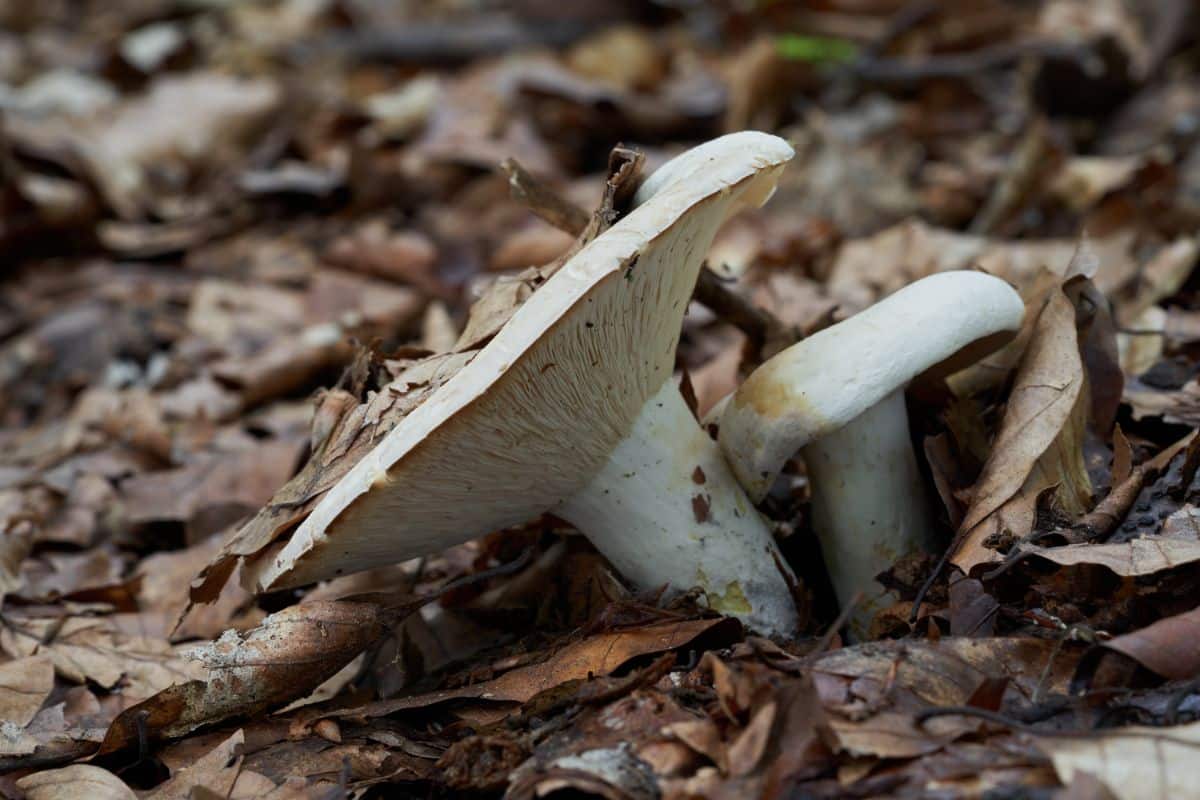
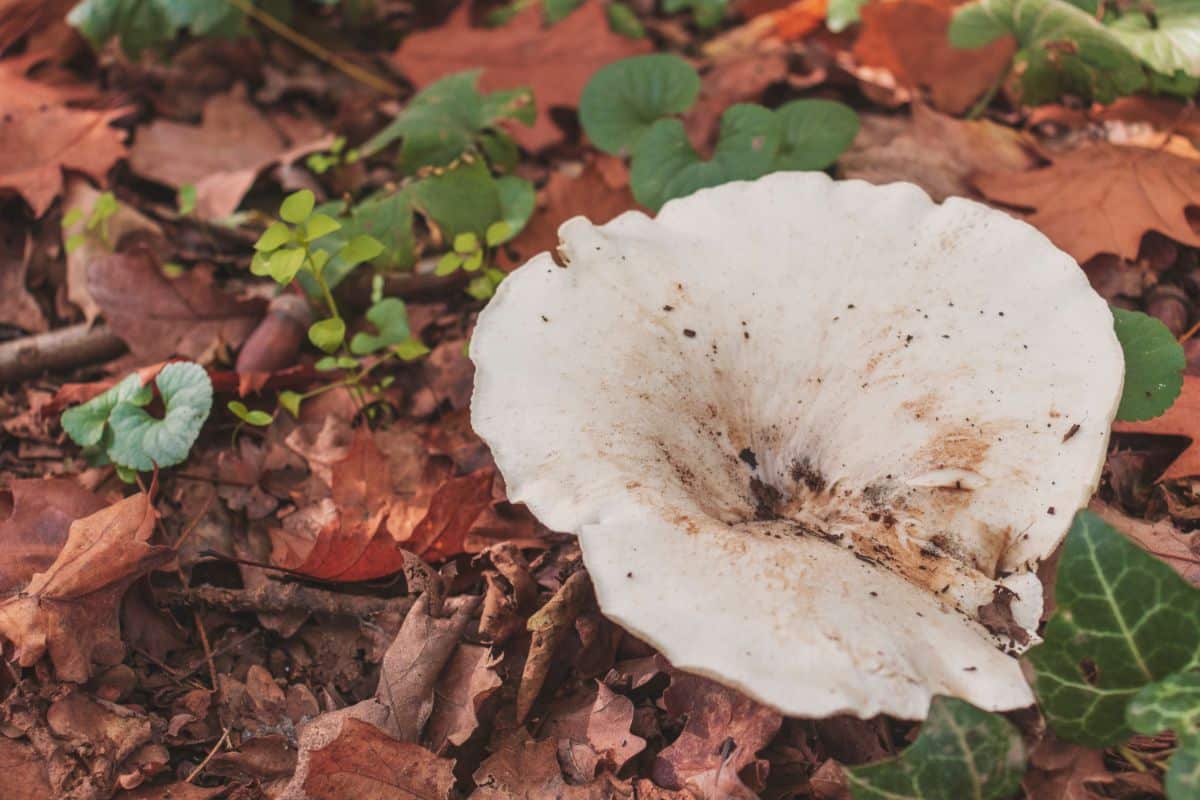
Other Edible Milkcap Mushroom Varieties to Explore
Lactarius piperatus is just one of many edible milkcap mushrooms, and exploring other varieties can lead to new culinary adventures. Some other edible milk caps include:
Lactarius deliciosus: Also known as the saffron milkcap, this mushroom has a bright orange cap and a mild, nutty flavor.
Candy Caps: With an intoxicating maple syrup scent, this group of Lactarius mushrooms make a fantastic baking flavoring.
Lactarius volemus: The weeping milk cap, or lactarius volemus, has a creamy white cap and a meaty texture, making it an excellent meat substitute.
Lactarius quietus: The bearded milkcap, or lactarius quietus, has a brownish-gray cap and a slightly sweet taste that pairs well with savory dishes.
Lactarius indigo: This bright blue mushroom that also bleeds blue is an excellent edible, and a super fun mushroom to find.
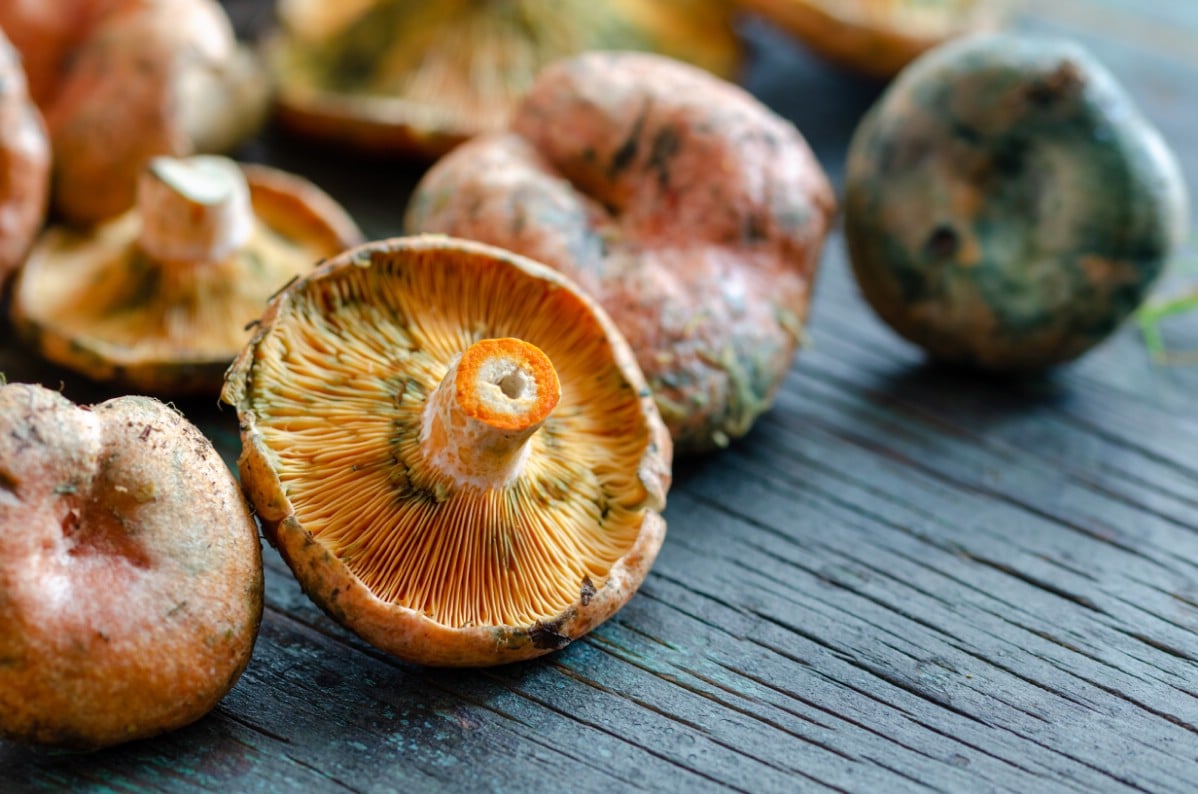
Peppery Milk Cap Common Questions
Is the peppery milk cap medicinal?
This mushroom was used in the 19th century as a folk cure for tuberculosis, but it had no effect. Recently, studies have shown that L. piperatus can be used as an antiviral agent, and the latex shows promise in treating viral warts.

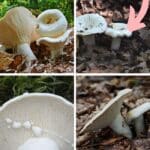
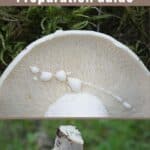
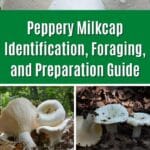
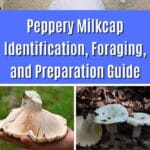


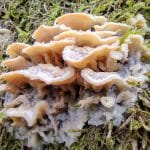
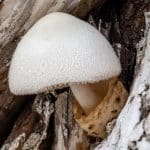
willis Penland says
I have hunted morel mushrooms since my youth.Am new to hunting other species but have been picking chanterelles and lobsters. I have seen many other mushrooms where I hunt and have seen tons of white large funnel mushrooms with gills and some large brown , some saucer size and a few dinner plate size with no hills. The latter being like a sponge on the bottom and brown on top in oak forests. I have been reluctant to pick the white and brown mushrooms until I know for sure they are editable but having a lot of fun hunting.
Jenny says
There are tons of species out there! This guide to russulas might help with some that you see — they’re the most common species in most places. Russula mushrooms The ones with no gills are boletes or polypores, a huge section of the mushroom kingdom – the most popular being the King BoleteThis guide will help with the boletes, if that’s what they are https://www.mushroom-appreciation.com/all-about-boletes.html
davyd286 says
The ones you describe as “plate size” sound a lot like Bitter Boletes. They appear very similar to the delicious King Bolete (although often larger in size), but if you taste a small piece (and spit it out), it’ll be bitter. The bitterness does not go away with cooking. If it’s not bitter but mild or even sweetish – you’ve hit a jackpot!
Ria says
You’ve misnamed Lactarius volemus (now Lactifluus volemus) as the birch bolete, when Leccinum scabrum is actually the birch bolete.
Jenny says
Thank you for catching that. Lord knows what my brain was doing that day to make sure a bizarre mistake, oh my!
Saara says
I would call unparboiled peppery milkcaps poisonous – they can cause blisters on mucuous membranes and eating them like regular edible mushrooms results in a bad case of upset stomach. Once parboiled they are alright, although this species isn’t particularly appreciated here in Finland – Lactarius rufus, L. torminosus and L. trivialis are the popular trio.
Jenny says
Thanks for the feedback. I am very careful with the world poisonous since its gets bandied around a lot to scare people away from mushroom hunting (here in the States, there is a lot of misinformation about mushrooms). You make a good point though; this is not a mushroom you’d want to eat without parboiling. To call this “poisonous” though because it can cause blisters would be like calling super hot ghost peppers poisonous — they’re not. They’re just “eat with extreme caution”